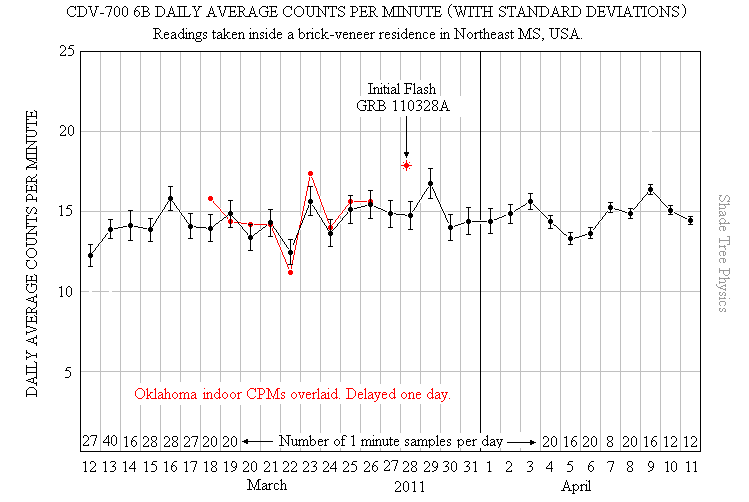
Standard deviation error bars for March were corrected on 15 Feb 2013.
The time of the intial flash of Gamma-Ray Burst 110328A is indicated by the red star.
Victoreen CD V-700 6B Geiger Counter counts-per-minute (CPMs) were done inside a brick veneer dwelling in Northeast Mississippi. The Geiger-Müller tube beta shield was closed for all counts.(This means that only gamma-rays and muons were counted.)
One-minute counts were done in groups of four at various times throughout each day. The standard deviations for the daily average CPMs were calculated with an Excel spread sheet.
Typically readings were done for a total of 20 minutes each day. When the number of minutes was different from 20, the actual number of minutes for that day is shown next to the bottom of the graph.
Indoor Geiger counter CPM averages for 17 to 25 March, measured by Chris Cavanaugh in Yukon, Oklahoma* are also shown (in red). These averages are plotted one day later than actual because, generally, it takes a day for air masses over central Oklahoma to make their way to northeast Mississippi. The similarity of these plots for the period of 20-26 March (Mississippi dates) might be interpreted as evidence that variations in radioactivity were moving across the country from west to east. - *Yukon is a western suburb of Oklahoma City.
Related Sites
Radiation Counting Statistics - Keith E. Holbert